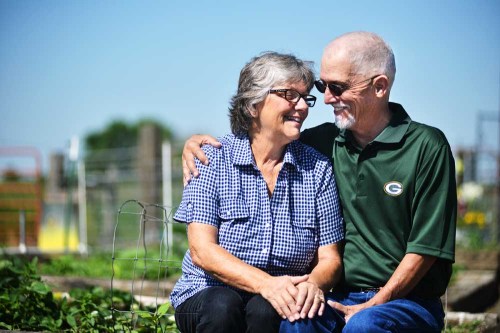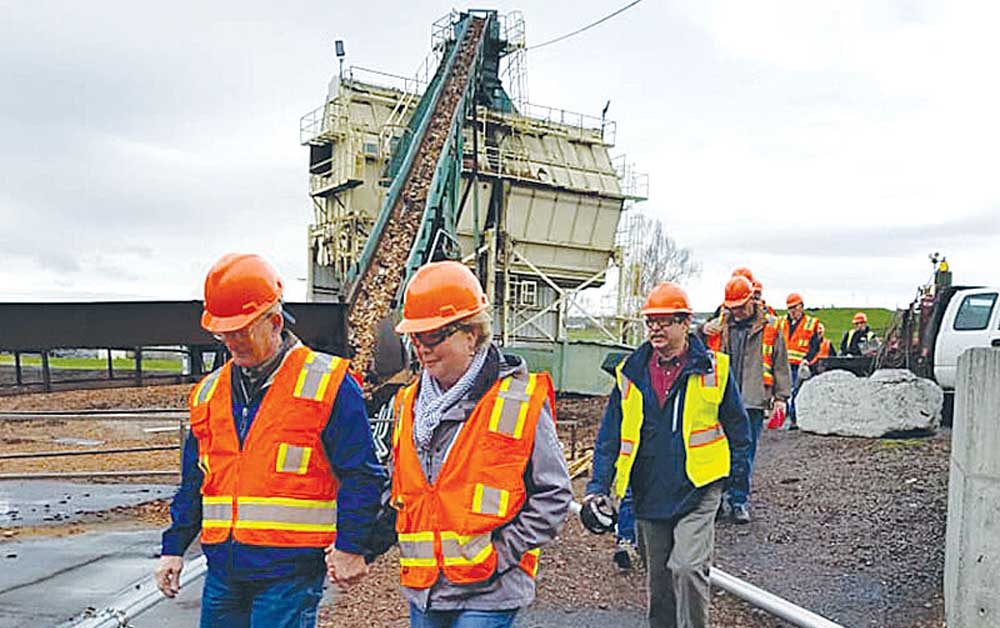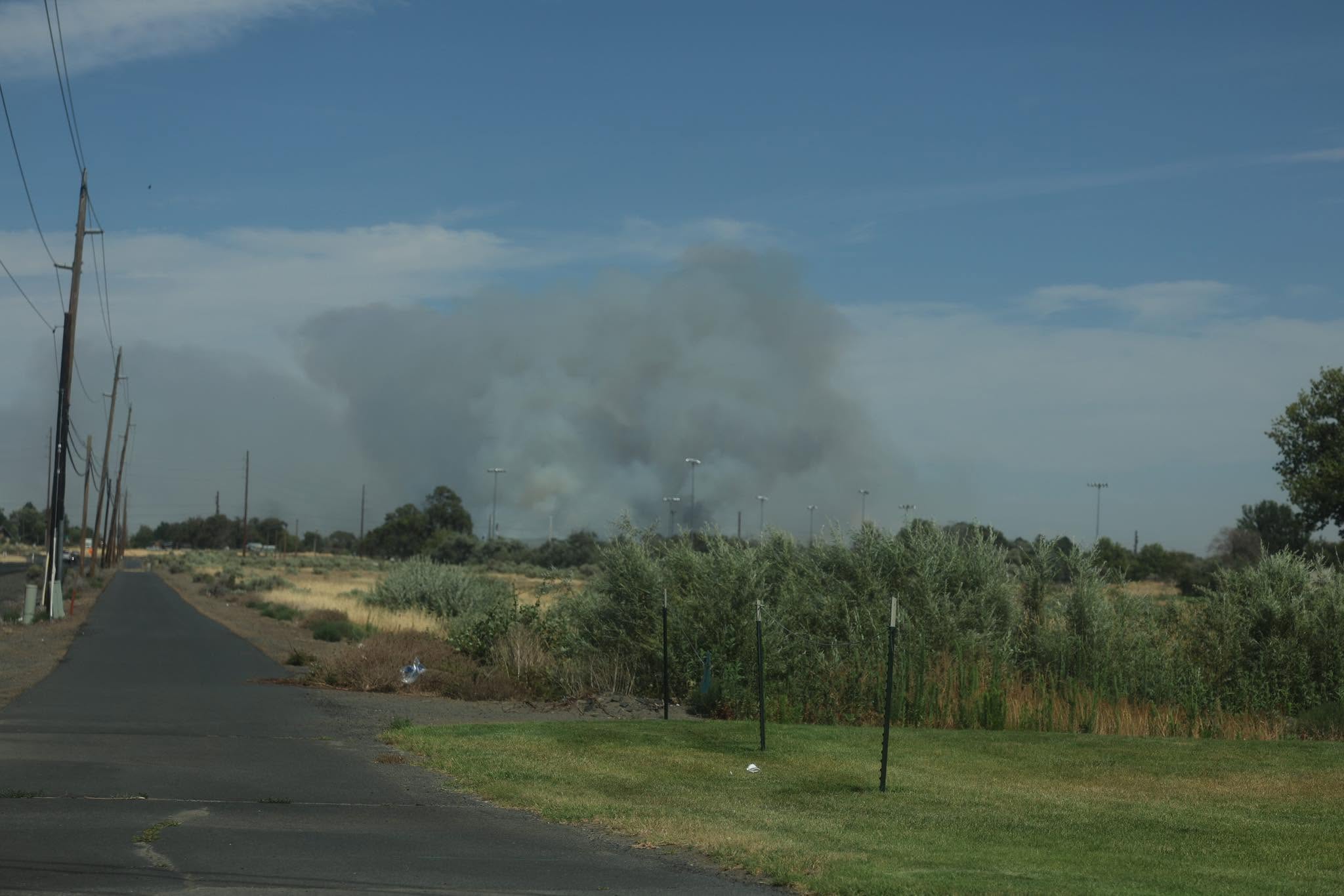Quick action saves woman’s life
Published 4:59 pm Wednesday, May 18, 2016

- Marguerite and Tom Darby sit in the garden of their home outside of Hermiston. The couple was shopping at Rite Aid last month when Marguerite collapsed after suffering cardiac arrest. A pharmacist's fast action in applying CPR may have helped save her life.
Marguerite Darby likely owes her life to a quick-acting pharmacist and a new way of performing cardiopulmonary resuscitation.
Darby, 60, doesn’t remember much about the day she went into cardiac arrest at the Hermiston Rite Aid store. She woke up a week later in a Seattle hospital with only fuzzy memories of shopping for patio furniture with her husband Tom.
On April 27, the couple drove eight miles to town from their farm. They were admiring a display of patio umbrellas at Rite Aid when the routine shopping trip suddenly morphed into a fight for survival.
“Marguerite said, ‘I don’t feel right’ and immediately passed out,” Tom said. “She fell into a shelving area across the aisle and didn’t move.”
Marguerite had suffered cardiac arrest, an electrical malfunction of the heart. That’s different from a heart attack, which involves a blockage.
Tom, in shock, remembers starting mouth-to-mouth resuscitation. Pharmacist Sarah Schwab knelt beside him and checked Marguerite’s pulse. Finding none, she began CPR compressions. The Clackamas-based pharmacist contracts for the RX Pro Health agency and was filling in that day at Rite Aid. Schwab started hands-only CPR that she learned in her last CPR class. The method involves pumping hard and fast mid-chest and doesn’t include rescue breathing.
She compressed Marguerite’s chest again and again before yielding to the Hermiston emergency medical responders who sped to the store. Tom stood back, his adrenaline racing.
“I was a basket case,” he said.
Paramedics and EMTs used a supercharged version of hands only CPR called high-performance CPR, which Hermiston Fire and Emergency Services responders trained in the method about a year ago. Since then, the survival rate has risen from roughly 10 percent to 50 percent for cardiac arrest victims who have what’s considered a “survivable rhythm.”
“That’s higher than the state or national average,” said EMS Director J.W. Roberts. “Our goal is 100 percent.”
“It’s a new mindset which emphasizes compression speed and eliminates pauses between compressions and keeping compressions steady and continuous,” said Dylan Spence, a firefighter/EMT who worked to save Marguerite.
“Science shows that high performance CPR is more effective and has higher survival rates,” said Hermiston paramedic Jeff Armstrong. “You don’t stop CPR ever for more than six seconds.”
It’s a pit crew approach with CPR as the main focus. Compressions continue during mouth-to-mouth, intubation or any other intervention, except for use of an automatic external defibrillator.
“Even when we stop to shock someone, we hover over their chest,” said Spence. “In less than a second, we’re back at it again.”
The person doing the compressions changes every two minutes. The firefighters use a CPR feedback device for optimal performance. A readout shows compression rate: The optimal rate is about 100-120 compressions per minute. A disembodied voice keeps them on track, saying, “Push harder” or “push faster” if they ease up.
Most in the business of saving lives know the success story of King County EMS, which now reports a cardiac arrest survival rate of 62 percent. The Seattle-area EMS has also pushed to train a multitude of local residents in CPR.
Rebecca Fancher, American Heart Association communications director in Oregon, said Seattle has enjoyed so much success that people joke that if a tourist falls down on the sidewalk, a bystander will likely start CPR.
Many of the bystanders are trained in something called Hands Only CPR, which AHA advocates for rendering aid to teens or adults in cardiac arrest. Unlike traditional CPR, you don’t worry about mouth-to-mouth resuscitation — you simply push rhythmically on the center of the person’s chest.
“You push hard and you push fast,” Fancher said. “Anyone can do it. Anyone can save a life.”
First, she said, call 911. Then do CPR compressions to the beat of the disco song “Stayin’ Alive” — that’s the correct tempo.
Marguerite Darby is on the mend. An internal cardiac defibrillator is now implanted in her chest, in case her heart has another electrical disruption. She feels better every day, though she won’t be able to drive or play golf for a while. Both she and Tom feel grateful they weren’t home the moment Marguerite’s heart stopped. Also, she had been the one driving the car that day, and they shudder to think what would have happened if her heart had faltered then.
But, mostly, they feel grateful to the emergency responders and especially the pharmacist who initiated the CPR.
“The woman was continuously pumping,” Tom said. “She didn’t stop.”
“I’m grateful she was there,” Marguerite said. “They say we have guardian angels everywhere — she was mine.”
Armstrong said Schwab likely made a big difference.
“Chances of somebody surviving a cardiac arrest has everything to do with how fast CPR is started,” he said. “After six minutes without CPR, the chances of survival just tanks. If she hadn’t started CPR, there might have been a different outcome.”
Tom had ended pancreatic cancer treatments only a week earlier. The treatment included surgery to remove part of his pancreas, small intestine and his gallbladder. Tom said they are both treasuring every moment.
“Neither of us should really be here,” he said.
“The little things that come up,” Marguerite said. “They aren’t important at all.”
———
Contact Kathy Aney at kaney@eastoregonian.com or call 541-966-0810.









